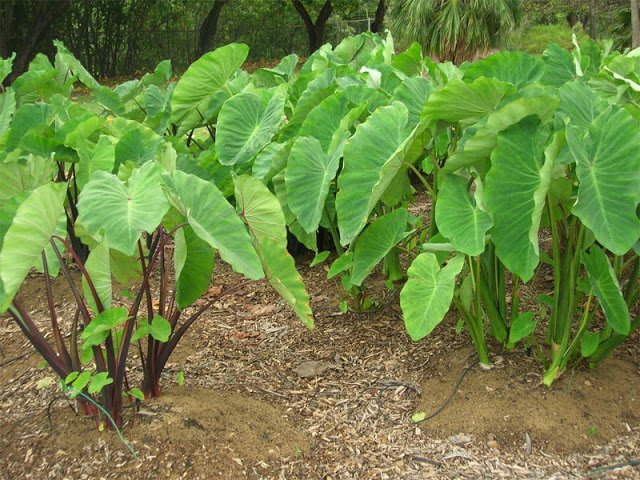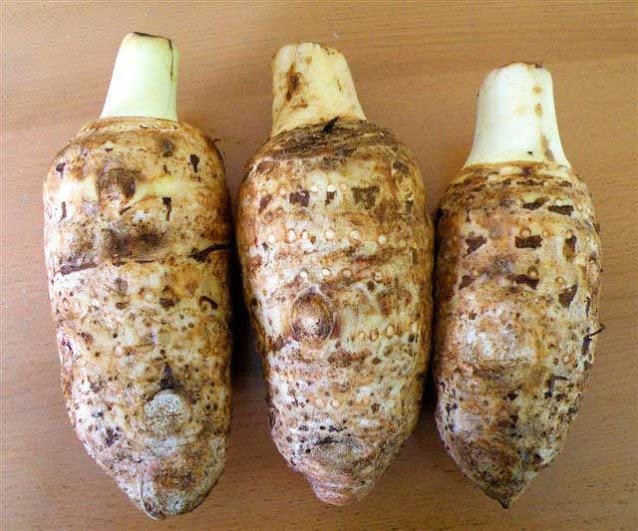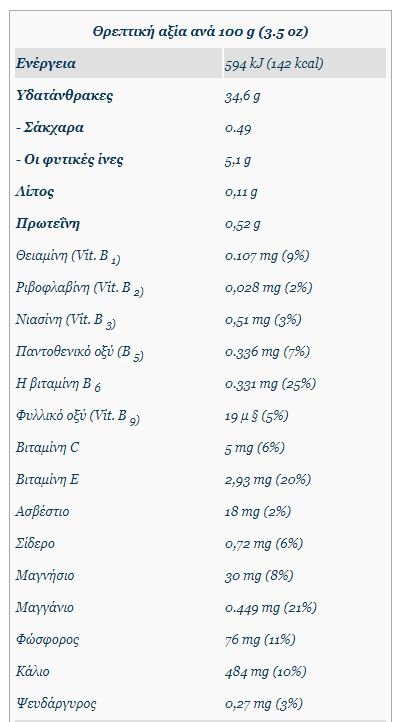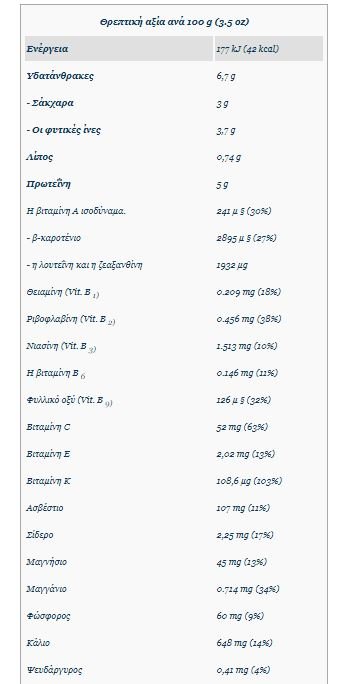Kolokasi: Kolokasi is a herbaceous plant. Its root system is tufted. Its volume is found up to 1 meter below the ground. It is essentially a bulb similar to the famous celery root or even potato. It thrives for 14 whole months. It does so in moist, warm climates. It is rich in starch and its taste is reminiscent of that of sweet potato.

The kolokasi of Cyprus
Zucchini is grown in Cyprus for its edible trunks. That is, the maps and the checkers. These are rich in starch, protein and vitamins. Both "maps" and "poules" grow below the soil surface. The word "mappa" refers to the central trunk. He is located just below the ground. Identified by name as "Kolokasi Sotiras". The word "checkers" refers to logs. These are the secondary or subsidiary trunks which grow sideways and is designated as "Kolokasi-Poules Sotiras".

Ikaria and Kolokari
Kolokasi is also cultivated in Ikaria. The island that became known for the longevity of its inhabitants, beyond its beauties. The Ikariotes know how to choose correctly. One of their secrets for the highest longevity rates on the island is the Mediterranean diet they follow. They know full well that no matter what happens they will have secured their own crops.
It is characteristic that when the Second World War broke out, the Ikariotes did not have a hard time, at least in terms of food, since they ate the bulbs from the colocasias that were in abundance on the island. In the long run we would say that in Ikaria they have dwindled a lot due to their uncontrolled collection. As for its baking, in Ikaria at least it is usual to boil it for two hours and then make it a salad by marrying it with various herbs, chives, oil and vinegar. Another Ikarian option is Skordalia with Kolokasi.
Kolokasi: What needs attention
Both the courgette and its leaves should never be eaten raw as in addition to their beneficial properties, unfortunately they also have a highly toxic substance, calcium oxalate. Substance of course that is lost during boiling.
For this reason, special care is recommended during the treatment and we always make sure to wear gloves. Instead of washing it, clean it well with paper or a wet towel and then remove the skin by cutting it with a knife.
We can also boil it as it is and then remove its skin. We never eat it raw because it contains toxins that are inactivated by boiling. Studies show that eating uncooked zucchini root can cause problems such as kidney stones, gout and more.
The nutritional value
Kolokasi contains prebiotic fiber and in particular is very rich in inulin, a carbohydrate associated with good gut health, while high fructose levels make it an attractive alternative to sucrose, as fructose is easily extracted from β. Zucchini also contains vitamin C, phosphorus, thiamine, potassium and is a very good source of iron.


Kolokasi: Promotes the health of the digestive system
Fiber should be an integral part of our diet, as it has the ability to cleanse the large intestine and promote gastrointestinal health.
Zucchini contains significant amounts of fiber so regular consumption helps the proper functioning of the colon and helps prevent unpleasant conditions such as bloating, gas in the stomach, stomach cramps, constipation and even diarrhea.
It has strong antioxidant properties
Free radicals are known to be dangerous byproducts of cellular metabolism, which attack healthy cells and turn them into cancer cells. Therefore, if we want to stay healthy we must protect our body from their harmful effects.
High levels of vitamins A and C, as well as other phenolic antioxidants, including cryptoxanthin, found in the root of the colocasia, strengthen the immune system and help fight free radicals, significantly reducing the chances of cancer and cancer.
Kolokasi: Helps manage diabetes
Another important role of fiber contained in the root of the plant, is the ability to regulate insulin and glucose levels in the blood. Therefore, regular consumption of colocasia helps people with diabetes to manage the disease and therefore protect themselves from unpleasant symptoms, while at the same time helping to prevent diabetes in healthy people.
Improves the function of the cardiovascular system
Zucchini contains a significant percentage of potassium. It is a metal that plays a key role in the health of the body, as it helps the proper function of fluid transport throughout the body and enhances cognitive functions. It also contributes to the immediate relief of stress and pressure from the blood vessels, as well as from the arteries, promoting the overall health of the cardiovascular system.
Kolokasi: Helps maintain healthy skin
Two vitamins that are a strong ally of skin health are vitamins E and A. Therefore, eating foods (such as colocasia), which contain in their composition the two valuable micronutrients, are a great way to protect our skin from the damage caused by ultraviolet radiation.
Vitamins A and E also help protect against the signs of premature aging including fine lines and wrinkles and restore the lost radiance of the skin. They also seem to speed up the wound healing process.
Creates a strong immune system
Perhaps the most important element of zucchini root for health is its role in the immune system. More specifically, it contains a very high percentage of vitamin C, which stimulates the production of white blood cells, which play a key role in protecting the body from serious diseases caused by various pathogenic microorganisms.
Kolokasi: They stimulate the production of red blood cells
The presence of iron and copper in the root of the colocasia makes it an important food suitable for preventing anemia and strengthening the circulatory system. In fact, the two precious metals are essential for the production of red blood cells, which help increase metabolic activity, the growth of new cells and the general oxygenation of the body, resulting in the body's organs functioning at optimal levels.

Uses and cooking
The courgette also has an ornamental use due to the shape of its large leaves. Its starch is digestible and is often used for baby food. It is usually eaten grilled, boiled or yahni and goes well with pork or beef but also with fish. It is cooked as a main dish but also as an accompaniment.
It will be good to avoid washing it before cooking because after baking it sticks and melts. But if it must be washed, dry it well with a towel. The Ikarians boil it for two hours and make it a salad with plenty of chives and various herbs, oil and vinegar or cooked with beans.
via
